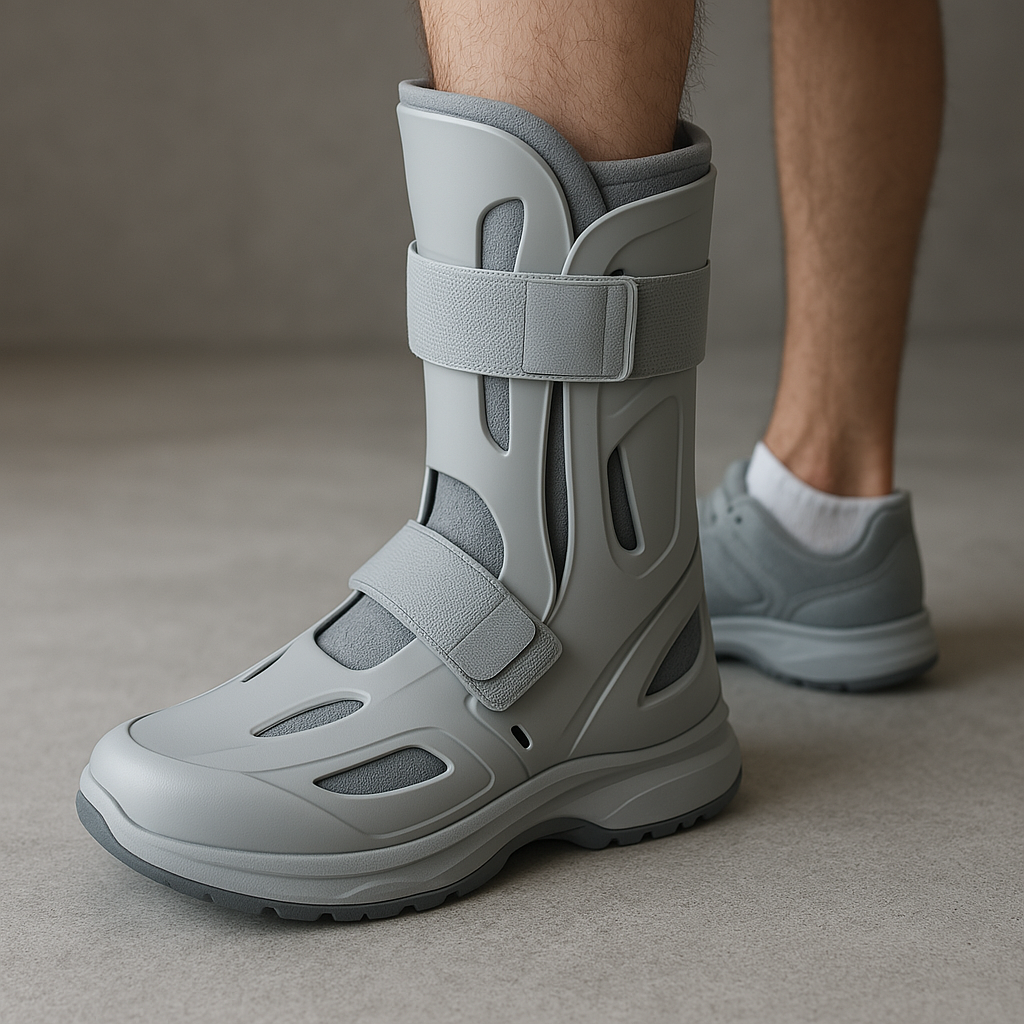Orthopedic foot orthoses, typically prescribed for injury rehabilitation and chronic foot conditions, are often standardized and lack user-driven aesthetic customization. The first part of the study addressed this by comparing 24 different orthotic design images across four device categories, short-leg orthoses, high-leg orthoses, foot bandages/textiles, and foot drop orthoses, created using three distinct approaches: generative AI, conventional medical products, and developmental research concepts.

Wearable medical devices such as orthopedic foot orthoses often face persistent stigma, leading many patients to reject them due to their clinical and unattractive appearance. A new study published in Applied Sciences, titled “Improving Social Acceptance of Orthopedic Foot Orthoses Through Image-Generative AI in Product Design,” offers empirical evidence that generative artificial intelligence can substantially boost public perception and acceptance of these medical devices. The research, led by Stefan Resch and colleagues from institutions in Germany and Spain, investigates how image-generative AI tools and custom prompting strategies can enhance the aesthetic and social appeal of orthopedic footwear.
This study explores how integrating AI-driven design workflows into product development can shift those perceptions. Two large-scale surveys involving 134 participants used a combination of quantitative and qualitative methods, measuring responses across various design types and orthotic categories using standardized tools such as the WEAR scale and Stereotype Content Model. The results clearly show that AI-generated designs significantly outperformed conventional orthopedic products and early-stage development concepts in user acceptance, perceived warmth, and competence.
Can generative AI make Orthopedic footwear more socially acceptable?
Orthopedic foot orthoses, typically prescribed for injury rehabilitation and chronic foot conditions, are often standardized and lack user-driven aesthetic customization. The first part of the study addressed this by comparing 24 different orthotic design images across four device categories, short-leg orthoses, high-leg orthoses, foot bandages/textiles, and foot drop orthoses, created using three distinct approaches: generative AI, conventional medical products, and developmental research concepts.
Participants rated AI-generated designs significantly higher across all categories for social acceptability and visual appeal. Devices created using AI tools like DALL-E and image-to-image generation frameworks were perceived as more modern, clean, and user-friendly. In contrast, traditional orthopedic products were viewed as bulky, unfashionable, or even stigmatizing. For example, high-leg orthoses, typically associated with serious injuries, were described as resembling ski boots and received the lowest acceptance scores. However, even within this low-performing category, AI-generated variants saw improved ratings due to their sleeker appearance and more integrated design elements.
The WEAR scale results, which evaluate the social acceptability of wearable devices, and the Stereotype Content Model ratings for perceived warmth and competence confirmed the statistical significance of these improvements. Importantly, demographic factors like gender or prior AI knowledge had no meaningful influence on these outcomes, reinforcing the universal relevance of design aesthetics in user acceptance.
How do prompt keywords and customized AI models influence design perception?
The second phase of the study took the investigation further by examining the role of prompt customization and specialized AI models. Researchers developed a tailored GPT-based model called OrthoticFootGPT, designed to generate orthotic concepts using targeted prompts that reflected user-centered keywords like “usability,” “social acceptability,” and “sporty design.” This customized model was compared against the default ChatGPT-4 and evaluated across 16 AI-generated high-leg orthosis images.
Statistical analysis revealed that OrthoticFootGPT consistently produced more socially accepted designs than ChatGPT, especially when prompts emphasized aesthetic appeal or sporting cues. Images guided by “sporty design” prompts performed best, suggesting that aligning medical device design with fashion-forward cues can drastically change public perception.
Participants described these AI-generated devices as “modern,” “aesthetic,” and “resembling a mix between boots and sneakers.” The study noted that including aesthetic-focused terms in prompts, such as those linked to everyday fashion or athletic gear, led to designs perceived as more wearable in public and less medical in appearance. Conversely, designs generated without guiding keywords were often rated poorly due to vague shapes or outdated styling.
The findings illustrate how prompt engineering is not just a technical step in AI interaction but a critical factor in shaping product outcomes. Aesthetic alignment via prompting can shift public perceptions from functional necessity to stylish utility - a major leap in promoting compliance with medically necessary devices.
What does this mean for future medical product design and wearable tech?
The implications of this research extend beyond orthopedic footwear into broader applications of human-centered product design in healthcare and consumer wearables. By using generative AI to create visually appealing and customizable prototypes, designers can involve users earlier in the development cycle, increasing both emotional connection and device compliance.
The study recommends incorporating AI-generated visual outputs into iterative design workflows, supported by domain-specific GPTs trained on relevant functional, anatomical, and aesthetic data. Moreover, it calls for the refinement of prompting strategies that blend medical specifications with style-conscious descriptors to optimize design acceptance.
The researchers note that while generative AI can enhance visual aesthetics and social perception, technical feasibility and clinical performance still require expert validation. AI-generated designs must be post-processed into CAD-compatible 3D models, adapted for anatomical precision, and tested for long-term usability and safety before reaching manufacturing.
Moreover, the study highlights ethical considerations, including potential biases in training datasets and the risk of reinforcing stereotypes. It calls for inclusive co-design practices involving patients, clinicians, and designers to ensure equitable, culturally sensitive outcomes. Additionally, regulatory standards must evolve to address the intersection of AI-generated design, medical safety, and user perception.











-1.png)


